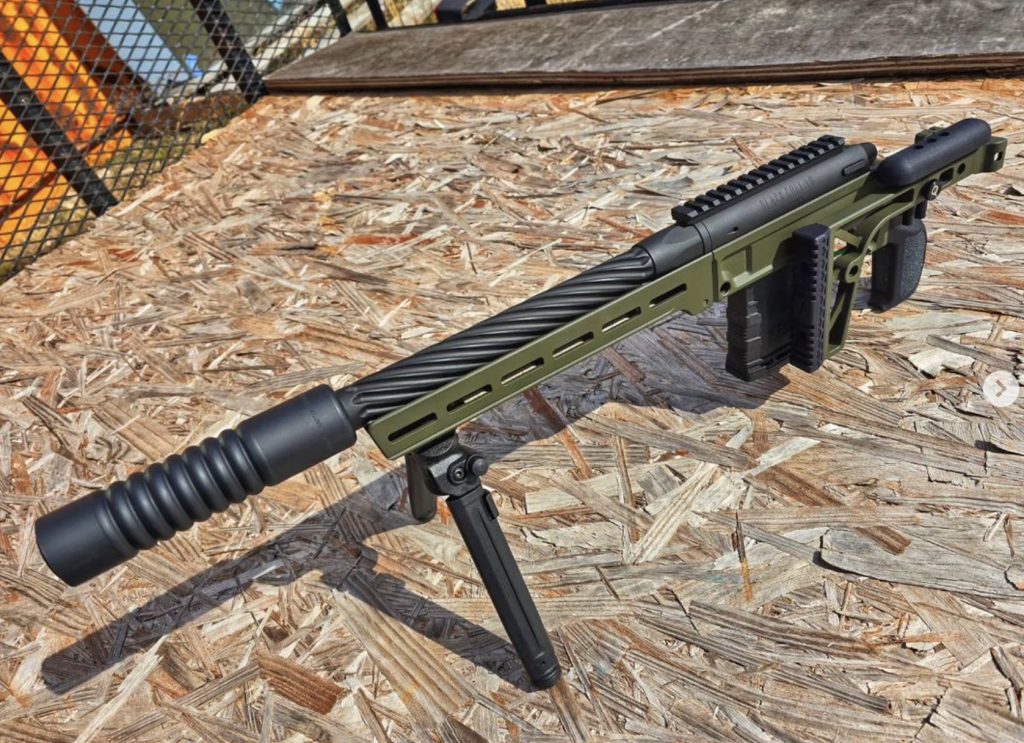
If you go to the ATF web site to see how long it’s currently taking them to process a Form 4, this is what you’ll see (at least as of today):

If you’re not a buyer of NFA-regulated items like suppressors, you may think, ‘Huh, under three months isn’t too bad.’ But we’d heard that the numbers ATF is publishing don’t really reflect reality. In fact, they’re processing Form 4s faster than that these days. Much faster, in fact.
Wanting to find out what’s really going on, we talked to a couple of people who would know…Knox Williams and Owen Miller at the American Suppressor Association. What they told us was, well, jaw-dropping. They’d gotten anecdotal reports of eForm processing times measured in days and a couple of weeks. They’ve confirmed this not only with ATF, but with retailers as well.
They told me they’d heard of a couple of instances of eFilers who’d completed the process at a gun store, ran errands for a couple of hours, and gotten home to find that their Form 4 had already been approved.
If you want more proof of what’s happening in the real world, check out Silencer Shop’s continually updated wait time tracking results.
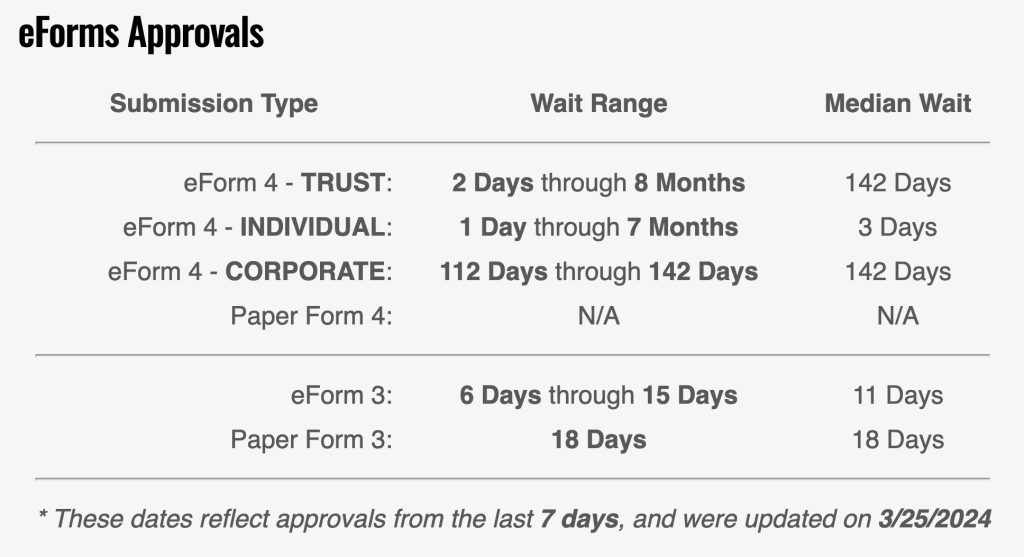
Yes, you read that right. The processor of more Form 4s than anyone else in the country is seeing an average processing time of three days for individual eForm 4 filings.
We’ll wait while you let that sink in.

For those of you who aren’t familiar, suppressors (AKA, silencers) are regulated under the National Firearms Act. That means you can’t just walk into a gun store and buy one, even with a background check, as you would a pistol, rifle, or shotgun.
Instead, you have to fill out some paperwork, pay greedy Uncle Sam a $200 tax, and wait for them to run a background check, dot the bureaucratic i’s, cross the regulatory t’s and then, finally, give you permission to pick up the suppressor you’ve already paid for from your local retailer.
Yes, that’s a pain in the posterior. Not only do a lot of people decide they don’t want to shell out $200 on top of the price of the can they want, but they also really don’t want to wait six months or more for ATF to grant them permission.
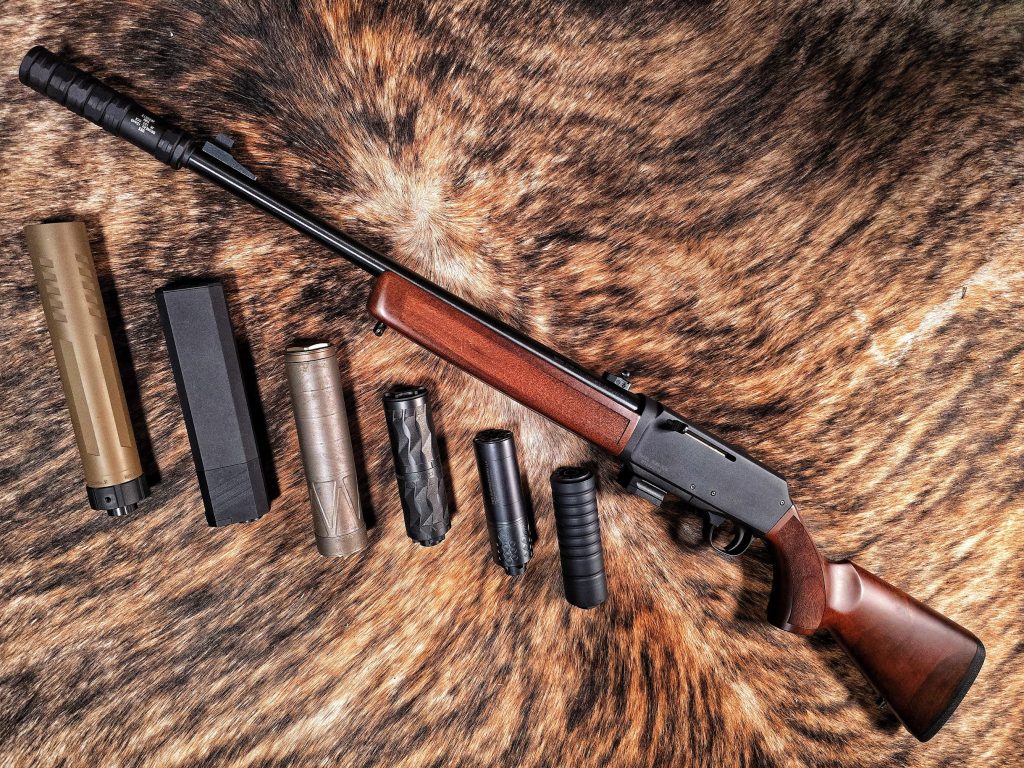
If you’ve shot guns with suppressors, you know it’s very much worth the wait and the added expense. Still, having to wait months for permission on top of bleeding you for a couple of Benjamins — for each can you buy — is adding insult to injury. That’s why these latest reduced processing times, more accurately measured in days rather than months, are a very big deal.
The ATF eForm system was first abortively rolled out over a decade ago, then pulled after burping, barfing, and farting so badly it was obvious to all that it just couldn’t do what it was supposed to do. It was built, after all, by the finest technology minds the government could muster. ATF eForms was the ObamaCare HealthCare.gov the firearm regulatory world.
That, however, was then and this is now. With all of the speed and agility you’d expect from an executive branch three-letter regulatory agency, ATF re-launched eForms in December of 2021. It had some initial bumps and bugs, but those were ironed out over time and now, finally, the system now works.
The natural question then is…why? What happened in the last few months? Why does ATF suddenly have its act together? To what do we owe this good news?
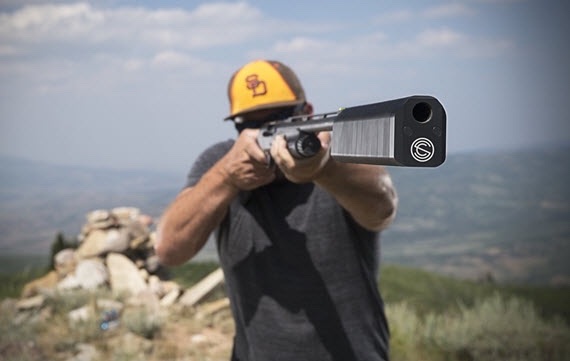
As it turns out, those questions have a lot of answers.
First we wondered if the volume of eForm 4s had dropped. The ASA tells us that Form 4 volume was down about seven percent last year, probably attributable to an iffy economy and higher inflation (thanks, Brandon). But volume is rebounding this year. The February, 2024 eForm 4 volume jumped 84% over the January numbers.
Then we wondered if ATF had hired more government functionaries to handle the processing. We hear that, in fact, they have, but the number isn’t huge. More hands certainly help, but that’s not the biggest reason for all the improvement.
The real story here, according to Knox and Owen is, as they told us, ATF has finally “gotten out of its own way.” In practical terms, that means they’ve improved their software and their processes, including…finally…bundling applications.
ATF used to process all Form 4s on a first in, first out basis. Over 70 percent of applications fly through the system with no red flags or delays. The problem was, those with issues that came in before the easily approved Form 4s delayed the entire process. The typos and other hangups held up the entire system.
That’s no longer the case. FIFO is no longer the processing protocol, so easy, quickly approved applications can sail through the system.
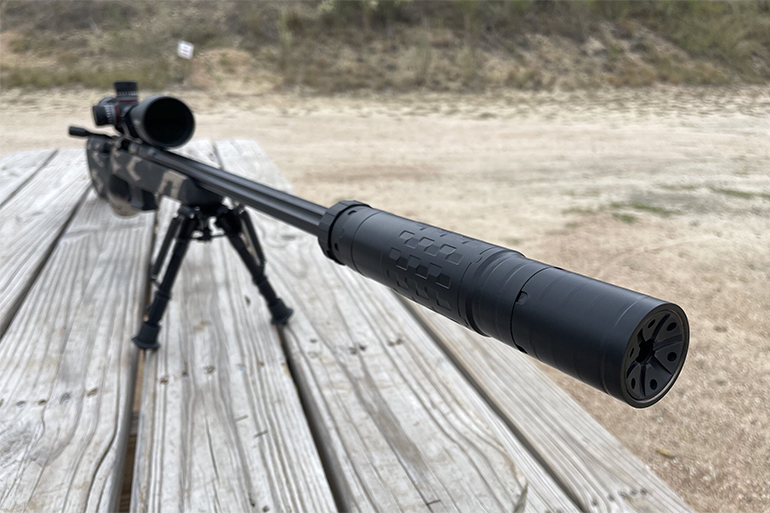
Another “feature” of past processing meant that if someone submitted two or three Form 4s wanting to buy two or three cans, each one was processed separately. Each one required its own background check and each one could very well have been processed by different people at ATF’s NFA division.
Now ATF is starting to bundle those. So no matter how many NFA items you may be buying, ATF is starting to combine them for one background check that’s processed by a single NFA division person.
We hear ATF bundling is still a work in progress as ATF updates its processes to more fully build that functionality into their systems. Not everyone who submits multiple Form 4s will have their paperwork bundled right now, but it’s happening more often.
This has drastically cut down on the overall volume of Form 4s ATF has to process. And now ATF has started doing the same thing with trusts. They expect to make the same kind of progress with trusts as they have with individual eForm 4 times, working toward getting the trust processing wait time down to an average of 30 days or less.
Finally, now that the eForms system is working, about 96% of the Form 4s ATF gets come in electronically. That means the information doesn’t have to be read by a processor, keyed into ATF’s system (a slow process) and potentially held up because of data entry errors.
All of this has been the result of a lot of work on the part of the industry and ASA. Some of the change was prompted by pointed questions about processing times — which hadn’t improved in about a decade — aimed at ATF Director Steve Dettelbach by members of the House Commerce, Justice and Science subcommittee last year.
ASA also convened an industry roundtable with NFA division officials at the end of last year where, among other things, ATF finally acknowledged that there’s no regulatory statute that prohibits them from bundling Form 4s for processing.
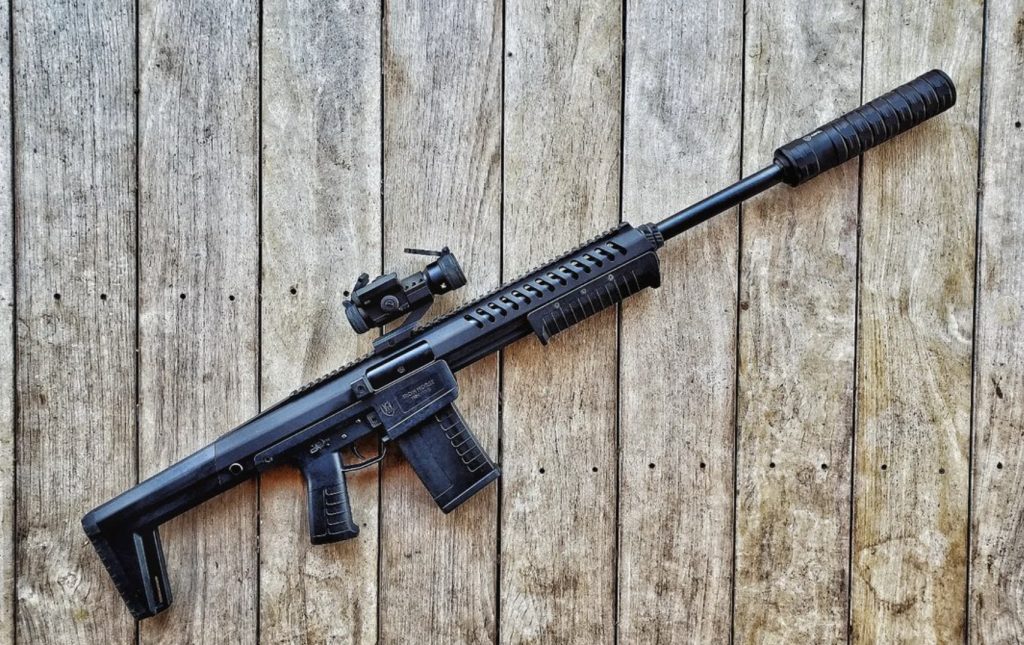
All of that hard work on the part of suppressor makers and the ASA has directly resulted in the streamlined processing at ATF and the drastically reduced processing times we’re now seeing. Also, in a March 15 webinar with the NFA division, ATF declared that the improvements they’ve made now constitute the “new normal” and wait times in days (and sometimes even hours) are what can be expected going forward.
That’s a huge win for the industry and should result in more people deciding that they’re willing to take the plunge and buy that first (or next) suppressor. That’s good for business, good for gun owners, and good for everyone’s ears.
Here’s hoping the new normal really is.

Anyone have any recommendations on a particularly quiet .22lr can, after the first-round ‘pop’ has been mitigated?
Oh, and I knew there was no way in hell it needed to take upwards of a year with all LE data being computerized these days.
Need to pass a law giving them 30 days max to issue the stamp or it gets issued anyways…
Suppressors are prohibited for the unwashed masses here in CA, so this is moot for us, but even if we *could* possess them, I’d be sickened by the thought of having to go through an entire process (requesting permission, paying fees, being assumed guilty until proven innocent via BGC, waiting for said permission, adhering to restrictions of what you can then do with your property, etc).
Wake me up when the “shall not be infringed” portion of the 2A becomes applicable to suppressors.
“Suppressors are prohibited for the unwashed masses here in CA, so this is moot for us,…”
That’s currently being worked on, you can assist by supporting your state’s gun rights orgs…
Rugged oculus or silencerco switchback . i work at a LGS and get to demo a lot of cans, these are the two that i have in my personal collection .
I have the Switchback and am very happy with it.
“Form 4 Wait Times are Down ” for a reason, they are building a ‘registry’ of who owns guns. A person that does the form 4 for a suppressor is doing it because they most likely own a gun. Contrary to the law against registry for guns there is no law against a registry of who paid a tax. The same with getting a tax stamp for an SBR, or anything NFA, they may not be able to have a registry for guns but they can have a registry of who paid a tax. And true its not a complete picture registry but combined with their other efforts it all adds up, plus also it lets them them know who has most likely, for example, a gun they privately purchased or assembled from an 80% kit.
seriously, this is a government that is doing everything it can to take away the 2nd amendment, to come and take your guns, will literally kill someone to do it, do you seriously think “Form 4 Wait Times are Down” because they are being nice and want to help you equip your guns with suppressors?
I’ve previously commented about how Guv agencies are now admitting to employing AI to scrape the Web and compile profiles.
(and people still roll their eyes at me when they learn I use cash nearly 100%)
In full agreement, that’s why I won’t buy a suppressor.
-Yay!
-It’s a trap
Not sure which but it doesn’t matter because I’m broke at the moment.
Suppressors should be sold “OTC”, with NO paperwork at all. I am unpersuasible on the issue. There is a REAL and PROVEN, actual harm committed by making suppressors difficult/expensive to obtain (as just ONE example, hunters can’t wear “cans” while they hunt – they need their sense of hearing, so every hunter risks hearing damage WITHOUT the presence of a suppressor), versus the ENTIRELY theoretical (and largely bogus) “risk” of having criminals using suppressors.
I would be curious to see what manufacturers of firearms would do if suppressors become unregulated. First, and most obvious, I would bet there would be HUNDREDS of gun models available, almost instantly, that came with integral, or “standard equipment” but removable suppressors. I also think suppressor technology (which has already made great strides in the last decade or so) would vault forward. Frankly, I can’t see a REAL downside to de-regulating suppressors. They are SAFETY EQUIPMENT.